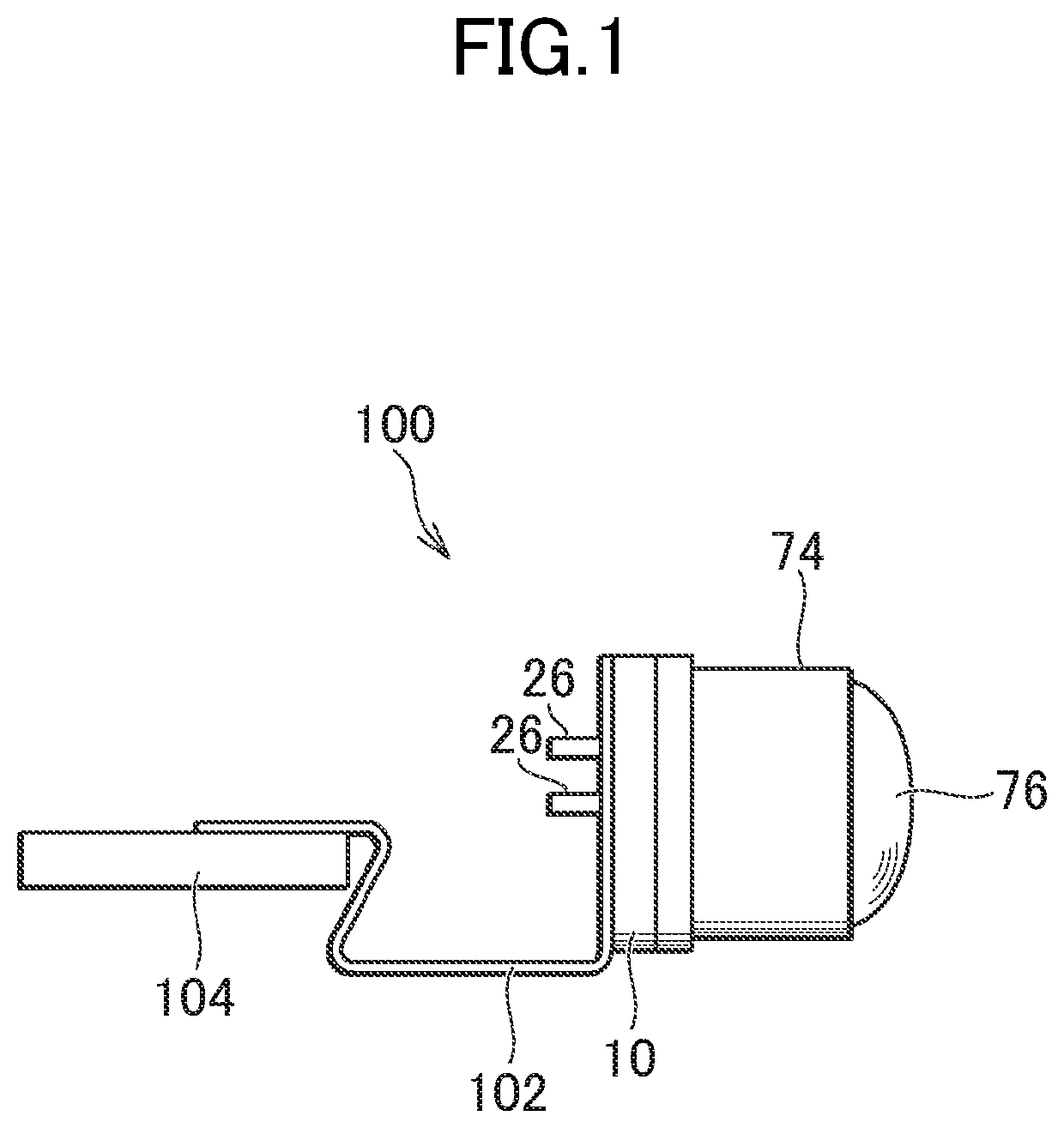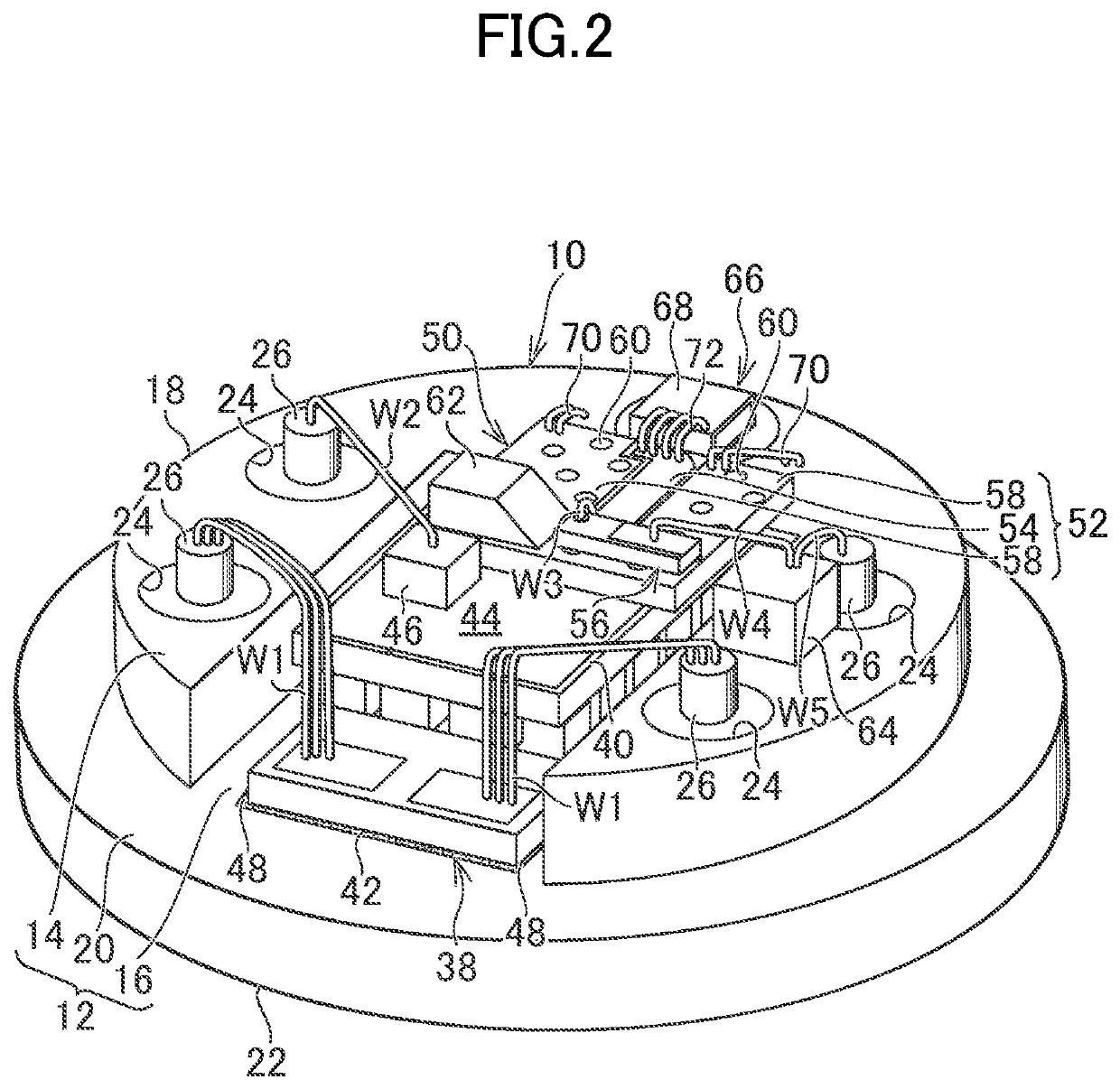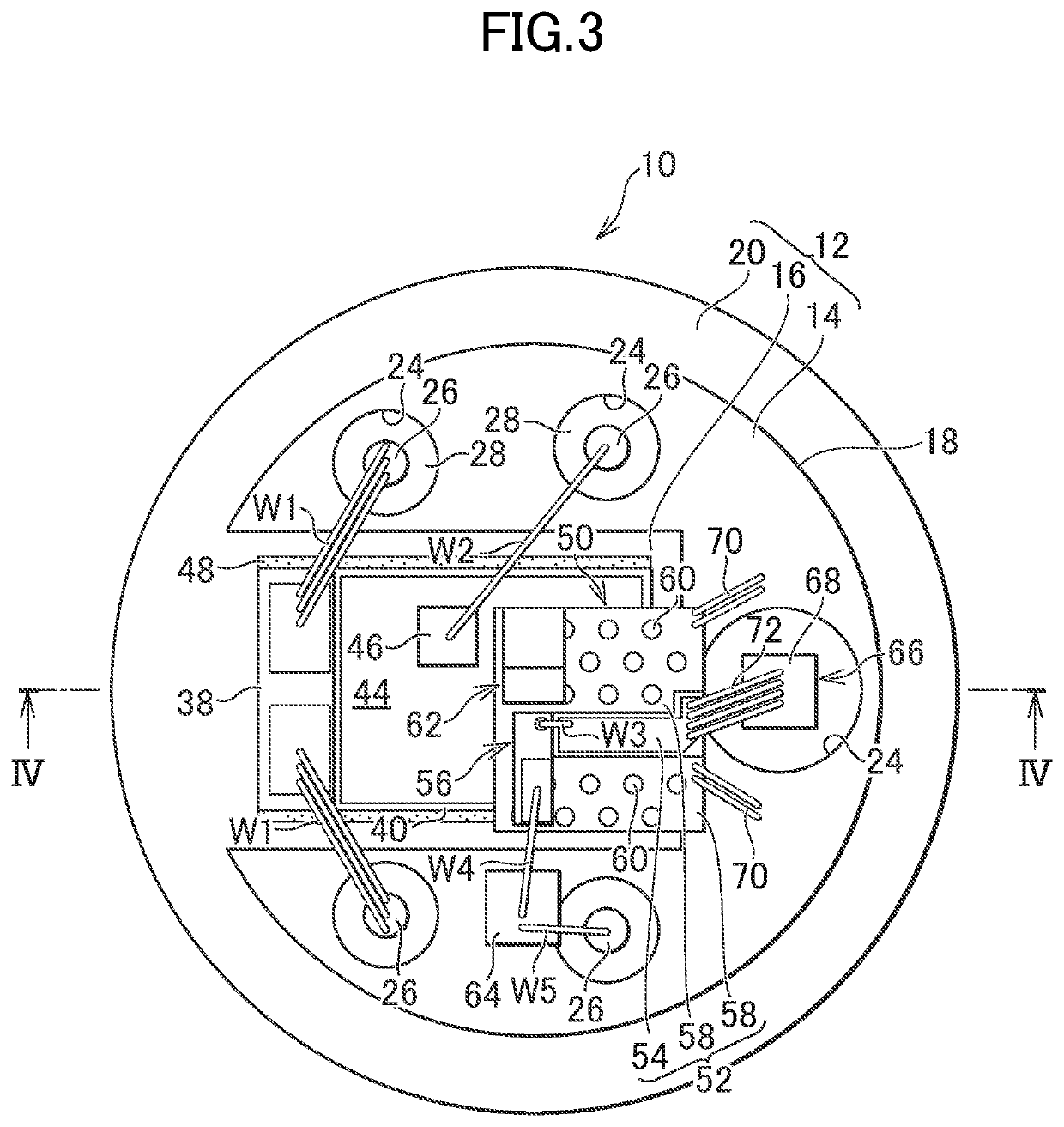Optical module
a technology of optical modules and optical components, applied in the field of optical modules, can solve the problems of degrading high-frequency characteristics and high impedance, and achieve the effect of improving high-frequency characteristics and lowering the impedan
- Summary
- Abstract
- Description
- Claims
- Application Information
AI Technical Summary
Benefits of technology
Problems solved by technology
Method used
Image
Examples
first embodiment
[0016]FIG. 1 is a side view of an optical module according to a first embodiment. An optical module 100 is a TO-CAN (Transistor Outline-Can) type optical module and may be any one of a transmitter optical sub-assembly (TOSA) equipped with a light emitting device, a receiver optical sub-assembly (ROSA) equipped with a light receiving device, and a bidirectional module (BOSA) equipped with both the light emitting device and the light receiving device. The optical module 100 has a flexible printed circuit board (FPC) 102, which is connected to a printed circuit board (PCB) 104. The optical module 100 has a conductive stem 10.
[0017]FIG. 2 is perspective view of a conductive stem 10 and electronic components mounted on it. FIG. 3 is a plan view of the conductive stem 10 and the electronic components mounted on it. FIG. 4 is a IV-IV cross-sectional view of a structure in FIG. 3.
[Conductive Stem]
[0018]The conductive stem 10 is made of a conductor such as metal. The conductive stem 10 is co...
second embodiment
[0038]FIG. 6 is a perspective view of a conductive stem and electronic components mounted on it according to a second embodiment.
[0039]The second dielectric block 266 has the second metallization pattern 268 on the surface. The second dielectric block 266 is mounted to the first surface 212 of the conductive stem 210. The second metallization pattern 268 is electrically continuous to the conductive stem 210. The ground wire 270 electrically connects the second metallization pattern 268 to the interconnection pattern 252 (ground pattern 258) of the sub-mount substrate 250. What is described in the first embodiment is applicable to other contents.
[0040]FIG. 7 is frequency characteristics of a comparative example, the first embodiment, and the second embodiment, calculated by a three-dimensional electromagnetic field simulator HFSS (High Frequency Structure Simulator). In the comparative example, the signal wire was bonded directly to the signal lead pin. It can be seen that the transm...
PUM
| Property | Measurement | Unit |
|---|---|---|
| conductive | aaaaa | aaaaa |
| electrical | aaaaa | aaaaa |
| diameter | aaaaa | aaaaa |
Abstract
Description
Claims
Application Information
 Login to View More
Login to View More - R&D
- Intellectual Property
- Life Sciences
- Materials
- Tech Scout
- Unparalleled Data Quality
- Higher Quality Content
- 60% Fewer Hallucinations
Browse by: Latest US Patents, China's latest patents, Technical Efficacy Thesaurus, Application Domain, Technology Topic, Popular Technical Reports.
© 2025 PatSnap. All rights reserved.Legal|Privacy policy|Modern Slavery Act Transparency Statement|Sitemap|About US| Contact US: help@patsnap.com



